Anirudh in Learnordo-newtonic:
 Centered at the Harlem neighborhood in New York City, Harlem Renaissance was an African American movement which peaked around the mid-1920s and during which African Americans took giant strides politically, socially and artistically. Known as the New Negro Movement during the time, it is most closely associated with Jazz and the rise of African American arts. Know more through the 10 most famous people associated with the Harlem Renaissance.
Centered at the Harlem neighborhood in New York City, Harlem Renaissance was an African American movement which peaked around the mid-1920s and during which African Americans took giant strides politically, socially and artistically. Known as the New Negro Movement during the time, it is most closely associated with Jazz and the rise of African American arts. Know more through the 10 most famous people associated with the Harlem Renaissance.
#6 ZORA NEALE HURSTON
| Lifespan: | January 7, 1891 – January 28, 1960 |
| Role: | Author |
Zora Neale Hurston arrived in New York City in 1925 when the Harlem Renaissance was at its peak and she soon became a prominent figure of the movement. Her writings, more than anyone else, revealed the truth of the black Southern experience as being a native of the rural South she was intimate with black folklore. Hurston was the most prominent female writer of the Harlem Renaissance and her 1937 novel Their Eyes Were Watching God is considered among the most influential works of not only the Renaissance but also of African American and women’s literature.
More here. (Note: Throughout February, at least one post will be dedicated to Black History Month. The theme for 2023 is Black Resistance. Please send us anything you think is relevant for inclusion)

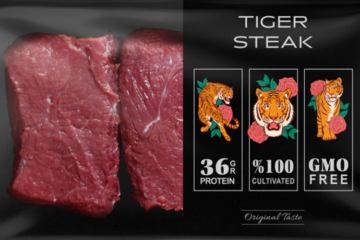 Cultivated meat is often heralded as an emerging alternative to intensive animal agriculture, promising new ways to produce slaughter-free beef, pork or poultry proteins. But one cellular ag start-up is working from a different playbook. Primeval Foods is developing lab-grown exotic meats that, it says, can deliver novel food experiences and health benefits.
Cultivated meat is often heralded as an emerging alternative to intensive animal agriculture, promising new ways to produce slaughter-free beef, pork or poultry proteins. But one cellular ag start-up is working from a different playbook. Primeval Foods is developing lab-grown exotic meats that, it says, can deliver novel food experiences and health benefits. Launching a dust cloud from the moon to block sunlight reaching Earth could reduce global warming, but such a strategy may require more than a decade’s worth of research before it can be implemented. The risks involved with such an approach in terms of how it could affect agriculture, ecosystems and water quality in different parts of the world are also unclear.
Launching a dust cloud from the moon to block sunlight reaching Earth could reduce global warming, but such a strategy may require more than a decade’s worth of research before it can be implemented. The risks involved with such an approach in terms of how it could affect agriculture, ecosystems and water quality in different parts of the world are also unclear.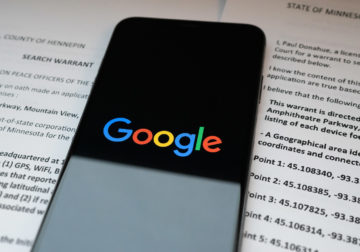 As most people know by now, technology is dramatically reshaping the practice of policing. Consider how an investigation might unfold after a spate of shoplifting incidents at a big-box retail store. Authorities believe the same person is responsible for all of them, but they have no leads on the perpetrator’s identity. In a process known as “geofencing,” the police go to a judge and get a warrant instructing Google to use its SensorVault database—which stores location information on any Google users who have “location history” turned on—to provide a list of all cellphones that were within 100 yards of the store in the one-hour range of each day the robberies took place.
As most people know by now, technology is dramatically reshaping the practice of policing. Consider how an investigation might unfold after a spate of shoplifting incidents at a big-box retail store. Authorities believe the same person is responsible for all of them, but they have no leads on the perpetrator’s identity. In a process known as “geofencing,” the police go to a judge and get a warrant instructing Google to use its SensorVault database—which stores location information on any Google users who have “location history” turned on—to provide a list of all cellphones that were within 100 yards of the store in the one-hour range of each day the robberies took place.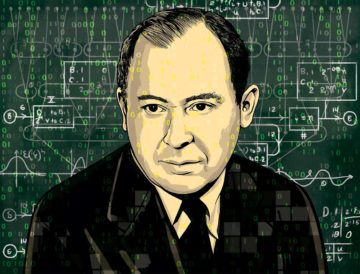 The only recipe for surviving technological change, von Neumann concluded, was relying on “human qualities.” But what are those qualities? What is “human” about them? And how can they help us achieve the political forms and ideals necessary to ensure our survival? Von Neumann and his powers of logic did not address those questions. On the contrary, he encouraged us to imagine a strict identity between mathematics and the human, and he gave us the tools to extend one particular kind of human activity—games of strategy—into ever-greater domains of life. Today, game theory and its computational algorithms govern not only our nuclear strategy but also many parts of our working world (Uber, Lyft, and many others), our social lives (Meta, TikTok) and love affairs (Tinder), our access to information (Google), and even our sense of play. Von Neumann’s ideas about human psychology provided the founding charter for the algorithmic “gamification” of the world as we know it. By concealing the distance between logic and the complexity of being rather than minding the gap, his axiomatized “psychology” heightened the very dangers he feared.
The only recipe for surviving technological change, von Neumann concluded, was relying on “human qualities.” But what are those qualities? What is “human” about them? And how can they help us achieve the political forms and ideals necessary to ensure our survival? Von Neumann and his powers of logic did not address those questions. On the contrary, he encouraged us to imagine a strict identity between mathematics and the human, and he gave us the tools to extend one particular kind of human activity—games of strategy—into ever-greater domains of life. Today, game theory and its computational algorithms govern not only our nuclear strategy but also many parts of our working world (Uber, Lyft, and many others), our social lives (Meta, TikTok) and love affairs (Tinder), our access to information (Google), and even our sense of play. Von Neumann’s ideas about human psychology provided the founding charter for the algorithmic “gamification” of the world as we know it. By concealing the distance between logic and the complexity of being rather than minding the gap, his axiomatized “psychology” heightened the very dangers he feared. In
In 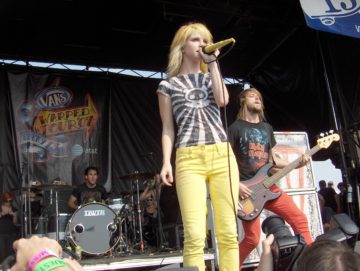 The tides of influence in music history move in unexpected ways. There are very few towering rock legends or chart-dominating contemporary rappers, for instance, who’ve enjoyed the sprawling and intensifying authority of the pop-punk band Paramore. The band, which was formed in the mid-two-thousands by a group of Christian teen-agers from the outskirts of Nashville, rose to prominence as emo and pop punk were being commercialized for mainstream audiences. Paramore—fronted by Hayley Williams, a vocal powerhouse with neon-marigold hair and a high degree of emotional athleticism—was a small-town Myspace act that hit it big. By the band’s third album, “Brand New Eyes,” from 2009, it had been nominated for a Grammy and included on the “Twilight” soundtrack. The following year, departing bandmates condemned it for being a “manufactured product of a major label.” No band had ever put the “pop” in “pop punk” more effectively than Paramore.
The tides of influence in music history move in unexpected ways. There are very few towering rock legends or chart-dominating contemporary rappers, for instance, who’ve enjoyed the sprawling and intensifying authority of the pop-punk band Paramore. The band, which was formed in the mid-two-thousands by a group of Christian teen-agers from the outskirts of Nashville, rose to prominence as emo and pop punk were being commercialized for mainstream audiences. Paramore—fronted by Hayley Williams, a vocal powerhouse with neon-marigold hair and a high degree of emotional athleticism—was a small-town Myspace act that hit it big. By the band’s third album, “Brand New Eyes,” from 2009, it had been nominated for a Grammy and included on the “Twilight” soundtrack. The following year, departing bandmates condemned it for being a “manufactured product of a major label.” No band had ever put the “pop” in “pop punk” more effectively than Paramore. African Americans have resisted historic and ongoing oppression, in all forms, especially the racial terrorism of lynching, racial pogroms, and police killings since our arrival upon these shores. These efforts have been to advocate for a dignified self-determined life in a just democratic society in the United States and beyond the United States political jurisdiction. The 1950s and 1970s in the United States was defined by actions such as sit-ins, boycotts, walk outs, strikes by Black people and white allies in the fight for justice against discrimination in all sectors of society from employment to education to housing. Black people have had to consistently push the United States to live up to its ideals of freedom, liberty, and justice for all. Systematic oppression has sought to negate much of the dreams of our griots, like Langston Hughes and Zora Neale Hurston, and our freedom fighters, like the Rev. Dr. Martin Luther King, Jr., Septima Clark, and Fannie Lou Hamer fought to realize. Black people have sought ways to nurture and protect Black lives, and for autonomy of their physical and intellectual bodies through armed resistance, voluntary emigration, nonviolence, education, literature, sports, media, and legislation/politics. Black led institutions and affiliations have lobbied, litigated, legislated, protested, and achieved success.
African Americans have resisted historic and ongoing oppression, in all forms, especially the racial terrorism of lynching, racial pogroms, and police killings since our arrival upon these shores. These efforts have been to advocate for a dignified self-determined life in a just democratic society in the United States and beyond the United States political jurisdiction. The 1950s and 1970s in the United States was defined by actions such as sit-ins, boycotts, walk outs, strikes by Black people and white allies in the fight for justice against discrimination in all sectors of society from employment to education to housing. Black people have had to consistently push the United States to live up to its ideals of freedom, liberty, and justice for all. Systematic oppression has sought to negate much of the dreams of our griots, like Langston Hughes and Zora Neale Hurston, and our freedom fighters, like the Rev. Dr. Martin Luther King, Jr., Septima Clark, and Fannie Lou Hamer fought to realize. Black people have sought ways to nurture and protect Black lives, and for autonomy of their physical and intellectual bodies through armed resistance, voluntary emigration, nonviolence, education, literature, sports, media, and legislation/politics. Black led institutions and affiliations have lobbied, litigated, legislated, protested, and achieved success.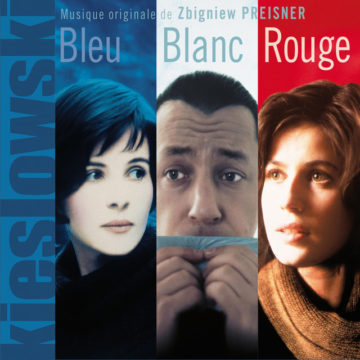 Music looms as a spectral presence over Krzysztof Kieślowski’s Blue, White, and Red, collectively known as the Three Colors trilogy. Like the triad of colored lights that bounce on the beautiful, sad faces in the films, Zbigniew Preisner’s multi-hued scores reflect on the images and refract from the inside out. Stern, lonely, and at times almost unbearably passionate, they often penetrate the ears and hearts of the characters. When the grieving heroine of Blue is suddenly overwhelmed by notes from a stoic oratorio, those notes are Preisner’s; when the lost protagonist of Red finds solace in an aria she plays at a record store, the music flowing through her headphones is his. Kieślowski may have written the stories—with the help of screenwriter Krzysztof Piesiewicz and screenplay consultants Agnieszka Holland, Edward Zebrowski, Slawomir Idziak, Edward Kłosiński, and Piotr Sobociński—but Preisner deserves credit for cocreating the trilogy’s mood of existential despair.
Music looms as a spectral presence over Krzysztof Kieślowski’s Blue, White, and Red, collectively known as the Three Colors trilogy. Like the triad of colored lights that bounce on the beautiful, sad faces in the films, Zbigniew Preisner’s multi-hued scores reflect on the images and refract from the inside out. Stern, lonely, and at times almost unbearably passionate, they often penetrate the ears and hearts of the characters. When the grieving heroine of Blue is suddenly overwhelmed by notes from a stoic oratorio, those notes are Preisner’s; when the lost protagonist of Red finds solace in an aria she plays at a record store, the music flowing through her headphones is his. Kieślowski may have written the stories—with the help of screenwriter Krzysztof Piesiewicz and screenplay consultants Agnieszka Holland, Edward Zebrowski, Slawomir Idziak, Edward Kłosiński, and Piotr Sobociński—but Preisner deserves credit for cocreating the trilogy’s mood of existential despair. In 1948, Albert Camus gave a speech at a Dominican monastery. The invitation was unusual. At this time, Camus’s best-known novel was The Stranger (1). He was often called “the philosopher of the absurd” because his philosophical essay, The Myth of Sisyphus (2), grappled with the question: why should you not kill yourself, given that the universe is without a purpose? And yet, these Dominicans asked Camus to speak on the theme of what the atheist would ask of the theist.
In 1948, Albert Camus gave a speech at a Dominican monastery. The invitation was unusual. At this time, Camus’s best-known novel was The Stranger (1). He was often called “the philosopher of the absurd” because his philosophical essay, The Myth of Sisyphus (2), grappled with the question: why should you not kill yourself, given that the universe is without a purpose? And yet, these Dominicans asked Camus to speak on the theme of what the atheist would ask of the theist. The Wife of Bath is the first ordinary woman in English literature. By that I mean the first mercantile, working, sexually active woman—not a virginal princess or queen, not a nun, witch, or sorceress, not a damsel in distress nor a functional servant character, not an allegory. A much married woman and widow, who works in the cloth trade and tells us about her friends, her tricks, her experience of domestic abuse, her long career combating misogyny, her reflections on the aging process, and her enjoyment of sex, Alison exudes vitality, wit, and rebellious self-confidence.
The Wife of Bath is the first ordinary woman in English literature. By that I mean the first mercantile, working, sexually active woman—not a virginal princess or queen, not a nun, witch, or sorceress, not a damsel in distress nor a functional servant character, not an allegory. A much married woman and widow, who works in the cloth trade and tells us about her friends, her tricks, her experience of domestic abuse, her long career combating misogyny, her reflections on the aging process, and her enjoyment of sex, Alison exudes vitality, wit, and rebellious self-confidence. For almost a decade, supporters of nuclear power have been predicting a comeback for the beleaguered technology. “In recent years, some eco-pragmatists and climate scientists have begun touting the advantages of zero-carbon nuclear energy,” I wrote in
For almost a decade, supporters of nuclear power have been predicting a comeback for the beleaguered technology. “In recent years, some eco-pragmatists and climate scientists have begun touting the advantages of zero-carbon nuclear energy,” I wrote in  Karel Čapek’s “War with the Newts,” published in 1936, one of the greatest pieces of science fiction of the 20th century, is a prophetic work. When I say prophetic, I mean it has the gift of seeing the present for what it is — and not only seeing it but also telling the rest of us what we have been looking at. “War with the Newts” said to its contemporaries that their civilization was living on borrowed time; it explained how ultimately suicidal the shortsightedness and injustice of their way of living was. Eighty-five years later, after the Trump administration erased “climate change” from its official websites and the world digs furiously deeper into the pit of fossil fuel dependency, Čapek’s apocalyptic vision has if anything become even more eerily, powerfully unsettling than it was in the context of Europe teetering on the brink of the Second World War.
Karel Čapek’s “War with the Newts,” published in 1936, one of the greatest pieces of science fiction of the 20th century, is a prophetic work. When I say prophetic, I mean it has the gift of seeing the present for what it is — and not only seeing it but also telling the rest of us what we have been looking at. “War with the Newts” said to its contemporaries that their civilization was living on borrowed time; it explained how ultimately suicidal the shortsightedness and injustice of their way of living was. Eighty-five years later, after the Trump administration erased “climate change” from its official websites and the world digs furiously deeper into the pit of fossil fuel dependency, Čapek’s apocalyptic vision has if anything become even more eerily, powerfully unsettling than it was in the context of Europe teetering on the brink of the Second World War. With blond braids looped over her ears, dressed in a long black skirt and black jacket accessorized with a riding crop, one of the best-selling female recording artists of all time stepped into the spotlight at the 65th annual Grammy Awards Sunday night. Madonna was there to introduce Sam Smith and Kim Petras, a nonbinary performer and a trans woman. She began by referring to her four decades in the music industry, and praised the rebels “forging a new path and taking the heat for all of it.” Was anyone listening? Social media’s loudest roars weren’t about her speech, her longtime L.G.B.T.Q. advocacy or her upcoming world tour. They were about Madonna’s preternaturally smooth and extravagantly sculpted face.
With blond braids looped over her ears, dressed in a long black skirt and black jacket accessorized with a riding crop, one of the best-selling female recording artists of all time stepped into the spotlight at the 65th annual Grammy Awards Sunday night. Madonna was there to introduce Sam Smith and Kim Petras, a nonbinary performer and a trans woman. She began by referring to her four decades in the music industry, and praised the rebels “forging a new path and taking the heat for all of it.” Was anyone listening? Social media’s loudest roars weren’t about her speech, her longtime L.G.B.T.Q. advocacy or her upcoming world tour. They were about Madonna’s preternaturally smooth and extravagantly sculpted face.